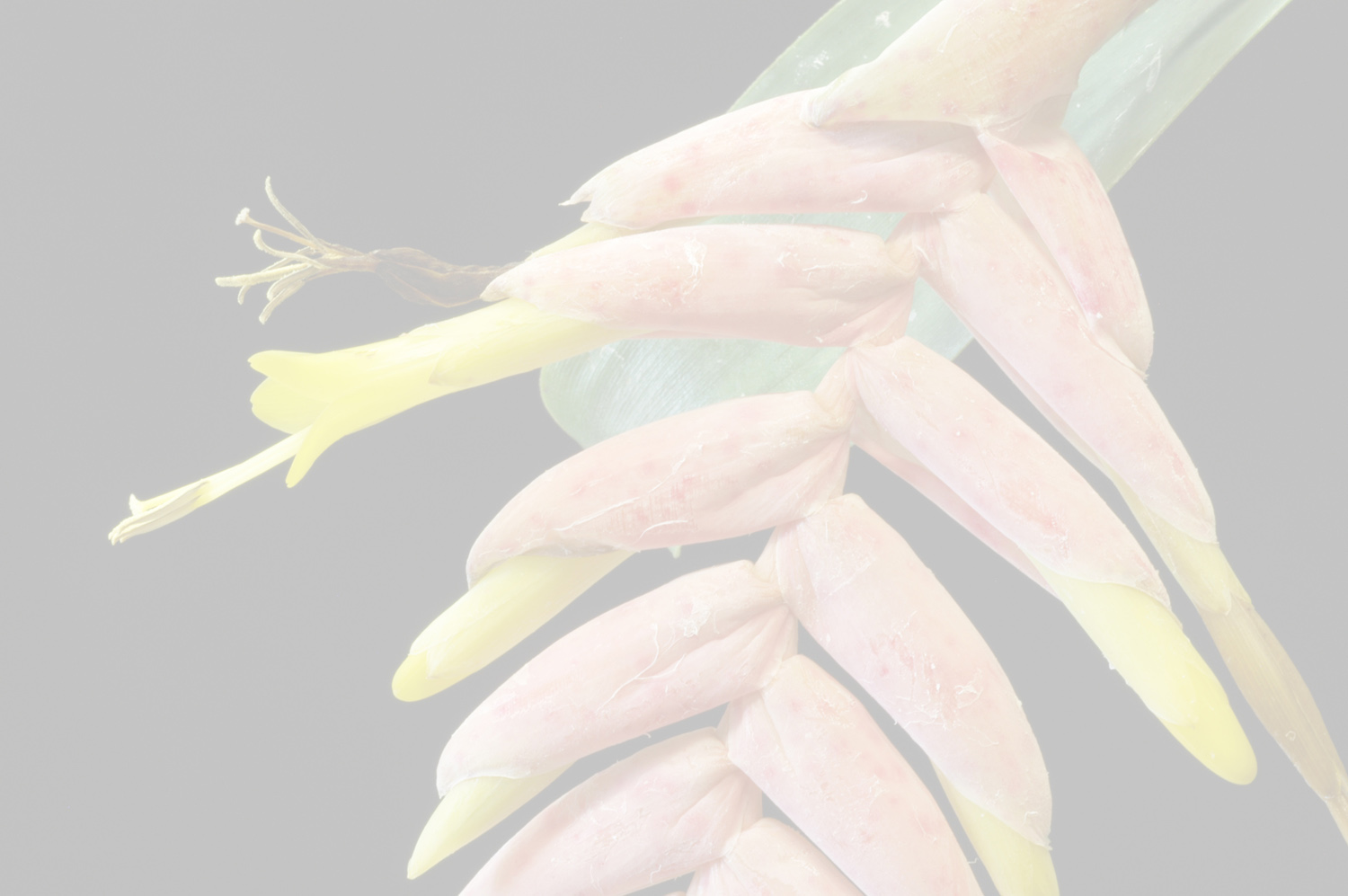



plant flowering to 90 cm high. leaves suberect to spreading, pale green, densely appressed lepidote, forming a rosette of 40 cm in diameter; sheath ovate, to 16 cm long, 85 mm wide, at base pale ferrugineous, the inner surface brown lepidote; blade lingulate, apices rounded and apiculate, to 20 cm in length and 60 mm width. inflorescence: peduncle erect, 40 cm long, terete, 5 mm in diameter; peduncle bracts erect, lanceovate, acuminate, shorter than the internodes; fertile part few branched, 30 cm high; primary bracts lanceovate, 25 mrmlong, 22 mm wide, shorter than the sterile bracteate base of the lateral spikes; spikes laxly distichous to 16-flowered, rachis faintly flexuous. flowers pedicellate, divergent to somewhat deflexed, to 47 mm long, pedicels to 10 mm long, 4 mrn in diameter, stronglyalate-sulcate; floral bracts broadly orbicular, obtuse cucculate, to 17 mm long, 20 mm wide, nerved, dissite lepidote, about equal in length to the internodes; sepals free, slightly asymmetric, obtuse-lanceolate, to 27 mm long, 12 mm wide, coriaceous, with hyaline margins, glabrous, nerved, the adaxial ones only indistinctly carinate, much exceeding the flower bracts, petals yellow, lingulate, rounded, on the inner base each with two acute ligula. stamens exserted, 33 mm long; anther obtuse-linear, 5 mm long, basifixed. pistil: ovary 5 mm high; style 32 mm long; stigmata minute and glandulous.Edited from (30-03-2023): Weber 1985d. Vriesea ouroensis, a new species from Minas Gerais, Brazil .